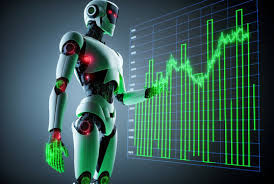
In the fast-paced world of finance, staying ahead of the curve is key to success. For traders in the foreign exchange (forex) market, this means adopting innovative strategies and leveraging cutting-edge technology. One such innovation that has gained significant attention in recent years is the forex robot – an automated trading system designed to execute trades on behalf of the user.
What exactly are forex robots, and how do they work? Are they a game-changer for traders, or just another passing trend? Let’s delve into the world of forex robots to find out.
Understanding Forex Robots
Forex robots, also known as expert advisors (EAs), are software programs designed to analyze market data, identify trading opportunities, and automatically execute trades on behalf of the user. These robots are typically based on predefined trading algorithms and strategies, which can range from simple moving average crossovers to complex mathematical models.
The appeal of forex robots lies in their ability to remove the emotional element from trading. Unlike human traders who may be influenced by fear, greed, or other emotions, robots execute trades based solely on predefined criteria. This can potentially lead to more disciplined and consistent trading, without the biases that human traders often face.
How Do Forex Robots Work?
Forex robots rely on a combination of technical indicators, price action patterns, and other parameters to identify trading opportunities. These parameters are programmed into the software, which then continuously monitors the market for favorable conditions.
Once a trading signal is generated, the robot will automatically execute the corresponding trade according to the user’s preferences. This can include factors such as trade size, stop-loss and take-profit levels, and risk management parameters.
Some advanced forex robots also have built-in features such as backtesting, optimization, and risk assessment, allowing users to fine-tune their strategies and maximize potential returns